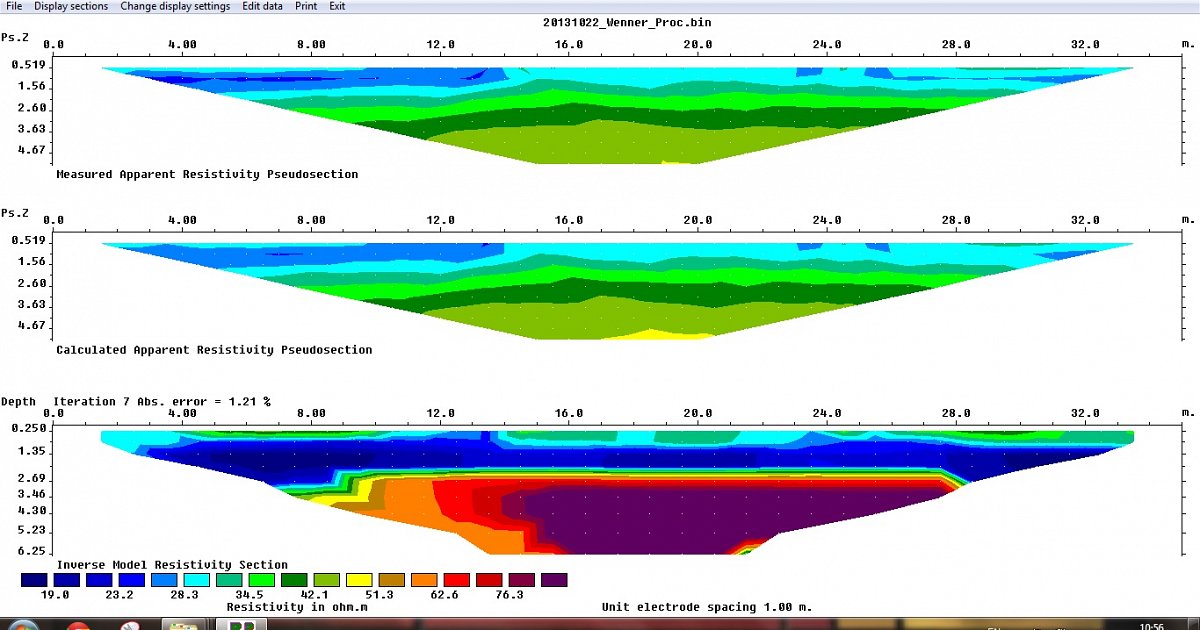3d Resistivity Inversion Software As A Service
At GD, we maintain the latest cutting edge software on high performance PCs, capable of crunching large geophysical datasets. Some of the software we routinely use for geophysical processing, imaging and modeling includes: • Geosoft Oasis geophysical processing software • Geosoft Target drilling and well evaluation • Geosoft Voxi 3D inversion including magnetic vector inversion • ER Mapper/Imagine • Maxwell EM processing and modelling software • EMaxAir depth slices • ModelVision potential field modelling • Potent potential field modelling • WellCAD • UBC 3D inversion codes (MAG3D, GRAV3D) • Loki (IP/Resistivity 2D and 3D inversion codes) • ArcGIS • MapInfo. Ftdiun2k.ini Windows 7.
• 199 Downloads Abstract Geological structures are 3-Dimensional (3D) in nature, thus 1-Dimensional and 2-Dimensional surveys cannot adequately model them. However, sophisticated 3D survey equipment are very expensive. In this study, a singlechannel ABEM SAS 300B Terrameter was used to obtain 3D models of the subsurface. This survey was carried out at three different locations within Abeokuta, a basement complex terrain of southwestern Nigeria. The area falls within longitudes 3. I Came To Play The Science Of Rhythm Guitar Book. 35° and 3.38° East and latitudes 7.22° and 7.46° North respectively, with coordinates of 2550.0 m North and 1724.2 m East. A manual 4-electrode system was used in the Electrical Resistivity Tomography survey at the three locations.

Use of PROSYS software for data display & filtering - field measurements on test site: handling of wires, electrodes, role of ground resistance, safety rules. Interpretation of resistivity images: - use of 2D/3D inversion for depth interpretation - examples of applications in various geological areas. Maintenance of equipment. Software for resistivity and 3D IP inversion. Zondres3d program is designeed for three-dimensional interpretation of electrical tomography resistivity and induced polarization data in land, cross-borehole and marine variants. Electrical tomography is a whole technique including the method of field observations and.
Each location was marked into 7 by 7 square grids with 1 m, 3 m and 5 m unit electrode spacings in succession. The pole-pole array was used with the two remote electrodes placed at distances of 23 m, 40 m and 65 m from the grids of 1 m, 3 m and 5 m unit electrode spacings respectively, to reduce their telluric effects on the measured apparent resistivity values. To reduce survey time consumption, the cross-diagonal survey method was adopted. The data obtained were analysed using a 3D inversion software called RES3DINV and 3-Dimensional models of the subsurface were also generated using Slicer Dicer graphics software. The study revealed layers extending to depths of 7.75 m, 23.2 m and 38.7 m for unit electrode spacings of 1 m, 3 m and 5 m respectively. It revealed resistivity values ranging from 7.3 Ωm to 300 Ωm for electrode spacing of 1.0 m; 13.8 Ωm to 200 Ωm for electrode spacing of 3 m and 3.9 Ωm to 200 Ωm for electrode spacing of 5 m at the first location. At the second location, it revealed resistivity values ranging from 0.53 Ωm to 120.0 Ωm for electrode spacing of 3 m and 0.30 Ωm to 100 Ωm for electrode spacing of 5 m.